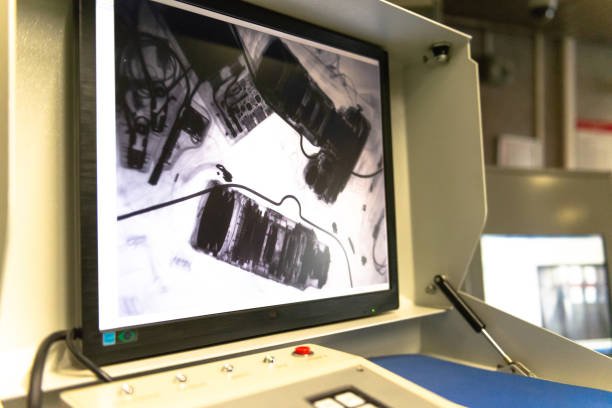How AI-Driven Explosives Trace Detection Enhances Real-Time Threat Response
In today’s world, ensuring safety in public places, transportation hubs, and government facilities requires advanced, intelligent, and fast-response technologies. Among the most impactful innovations in modern security infrastructure is the explosives trace detection system, a technology designed to identify minute traces of explosive substances in real time. When powered by artificial intelligence (AI), these systems are no longer just reactive detectors but proactive safeguards that significantly enhance situational awareness and rapid threat mitigation.
The Growing Need for Intelligent Threat Detection
As global security challenges evolve, traditional detection methods often struggle to keep pace with the increasing sophistication of threats. Manual inspections and older detection tools can be slow, prone to human error, and unable to process large crowds efficiently. AI-driven explosives trace detection systems (ETD systems) are redefining this landscape by offering real-time analysis, automated alerts, and predictive threat assessment.
These systems utilize sensors capable of detecting explosive residues from surfaces, luggage, or individuals. AI enhances this process by learning from large data sets to distinguish between harmless materials and genuine threats, dramatically reducing false positives and increasing accuracy.
How Explosives Trace Detection Systems Work
An explosives trace detection system functions by analyzing particles or vapor traces left behind by explosive materials. The process typically involves swabbing surfaces or screening air samples, which are then analyzed using advanced chemical sensors. Modern ETD systems employ mass spectrometry, ion mobility spectrometry (IMS), or fluorescence techniques to detect and identify explosive substances at microscopic levels.
AI integration allows the system to adapt and improve continuously. Machine learning algorithms identify patterns and improve detection speed, even when the chemical signatures of explosives are subtly altered. The result is a highly efficient system that minimizes screening delays while maximizing security precision.
Transforming Public Safety
Incorporating AI-based explosives trace detection systems into public safety operations marks a significant shift from traditional reactive measures to predictive intelligence. Public spaces such as airports, railway stations, and stadiums are vulnerable to potential threats, and real-time detection ensures that security teams can respond instantly to suspicious activity.
Transforming Public Safety isn’t just about identifying risks faster—it’s about creating a more resilient and prepared environment. AI-driven ETD systems analyze data from multiple checkpoints simultaneously, enabling authorities to map threat patterns across locations. For instance, if an explosive material is detected at one terminal, the system can immediately cross-reference passenger movement data, baggage tags, and surveillance footage to prevent potential attacks elsewhere.
This integration of AI and explosives detection has turned reactive response models into dynamic, interconnected security ecosystems capable of making intelligent, real-time decisions.
AI: The Driving Force Behind Smarter Detection
The inclusion of AI in explosives trace detection systems amplifies their potential beyond basic detection. AI algorithms process large volumes of sensory data in milliseconds, classifying materials, learning from past detections, and continuously improving accuracy. The benefits include:
- Reduced False Alarms – AI helps distinguish between similar chemical compositions, reducing unnecessary disruptions.
- Real-Time Analysis – The system delivers immediate results, crucial for high-traffic environments like airports or metro stations.
- Pattern Recognition – AI identifies recurring threat patterns, improving long-term security planning.
- Self-Improving Systems – Machine learning allows the system to evolve with each new data input, enhancing performance over time.
- Integrated Threat Management – AI connects ETD systems with other surveillance tools, providing holistic situational awareness.
Real-Time Threat Response and Decision-Making
Speed is everything in threat detection. A delay of even a few seconds can have catastrophic consequences. With AI-enabled automation, security personnel receive instant alerts with detailed information, including the substance type, concentration, and location. This real-time insight allows for immediate containment procedures and accurate decision-making.
Furthermore, AI systems can predict potential escalation by analyzing behavioral data, sensor readings, and surveillance inputs. For example, if multiple ETD sensors detect similar substances at different checkpoints, AI can correlate the data to identify coordinated threats. This proactive intelligence strengthens national and public security frameworks dramatically.
Integration with Other Security Systems
The effectiveness of an explosives trace detection system increases when integrated into a broader network of surveillance tools. Modern security operations connect ETD devices with video analytics, access control systems, and facial recognition platforms. AI ensures that these systems communicate seamlessly, providing a complete situational overview.
For instance, an AI-powered ETD system detecting explosive traces on luggage can immediately trigger facial recognition systems to identify the individual responsible and alert nearby security teams. This integration minimizes human error and accelerates response coordination, resulting in faster, more effective threat neutralization.
Applications Across Key Sectors
AI-enhanced explosives trace detection systems are being deployed across a variety of industries and sectors, including:
- Airports and Transportation Hubs: Rapid passenger and baggage screening ensures flight safety.
- Border Security: Detection at checkpoints helps prevent illegal transport of explosives.
- Government and Defense Facilities: Protecting high-value sites from potential attacks.
- Event Venues and Stadiums: Ensuring large crowds are screened without disrupting flow.
- Logistics and Cargo: Preventing hazardous materials from entering the supply chain.
Each of these applications benefits from the adaptability and learning capabilities of AI, which ensures consistent and reliable performance even in complex operational environments.
Leading Companies Providing Explosives Trace Detection Systems
Several companies are leading the way in developing advanced explosives trace detection systems for global security use. These organizations focus on blending AI, data analytics, and sensor technologies to create efficient, scalable detection solutions. The top companies include:
- Vehant Technologies – A pioneer in India’s security technology sector, Vehant offers intelligent threat detection and screening solutions, including AI-based explosives trace detection systems designed for airports, metro networks, and government facilities.
- Smiths Detection – A global leader providing threat detection and screening technologies that combine chemical analysis and AI for explosives identification.
- Rapiscan Systems – Known for advanced security scanning and detection devices used in transportation and critical infrastructure protection.
- Leidos Security Detection & Automation – Offers AI-powered ETD and imaging systems to improve airport and border security.
- Morpho Detection (part of Safran Group) – Specializes in sensor-based trace detection systems for global defense and homeland security applications.
These industry leaders are continuously innovating to make explosive detection faster, smarter, and more reliable in real-world environments.
Challenges and the Path Forward
Despite the rapid advancements, certain challenges persist in large-scale deployment of AI-based ETD systems. Calibration precision, environmental interference, and system cost can affect performance. However, continuous AI-driven improvements are addressing these limitations through adaptive algorithms and advanced sensor miniaturization.
Moreover, maintaining data privacy and ethical use of surveillance technologies is paramount. Governments and organizations are establishing clear regulations to ensure that these systems protect citizens without infringing on individual rights.
The Future of Intelligent Explosives Detection
The next generation of explosives trace detection systems will feature deeper AI integration, enabling systems to predict threats before they occur. By fusing IoT connectivity, edge computing, and big data analytics, future ETD devices will operate autonomously, share intelligence across platforms, and facilitate coordinated global responses.
Additionally, innovations in nanotechnology and quantum sensors will further enhance sensitivity and detection accuracy, ensuring that even the smallest explosive traces are identified instantly. These advancements will redefine how the world approaches security and threat management in the coming decade.
Conclusion
The fusion of AI with explosives trace detection systems represents a groundbreaking advancement in global security infrastructure. By enabling real-time analysis, intelligent decision-making, and integrated response mechanisms, AI-driven ETD systems are transforming the very foundation of public safety.
From airports to government buildings, these systems empower authorities to act swiftly, accurately, and confidently in the face of potential threats. Companies like Vehant Technologies, along with other global innovators, continue to push the boundaries of detection technology—ensuring that the future of security is faster, smarter, and safer for all.
As AI continues to evolve, the explosives trace detection system will not only detect threats—it will anticipate and prevent them, marking a new era in intelligent threat response and public safety management.







